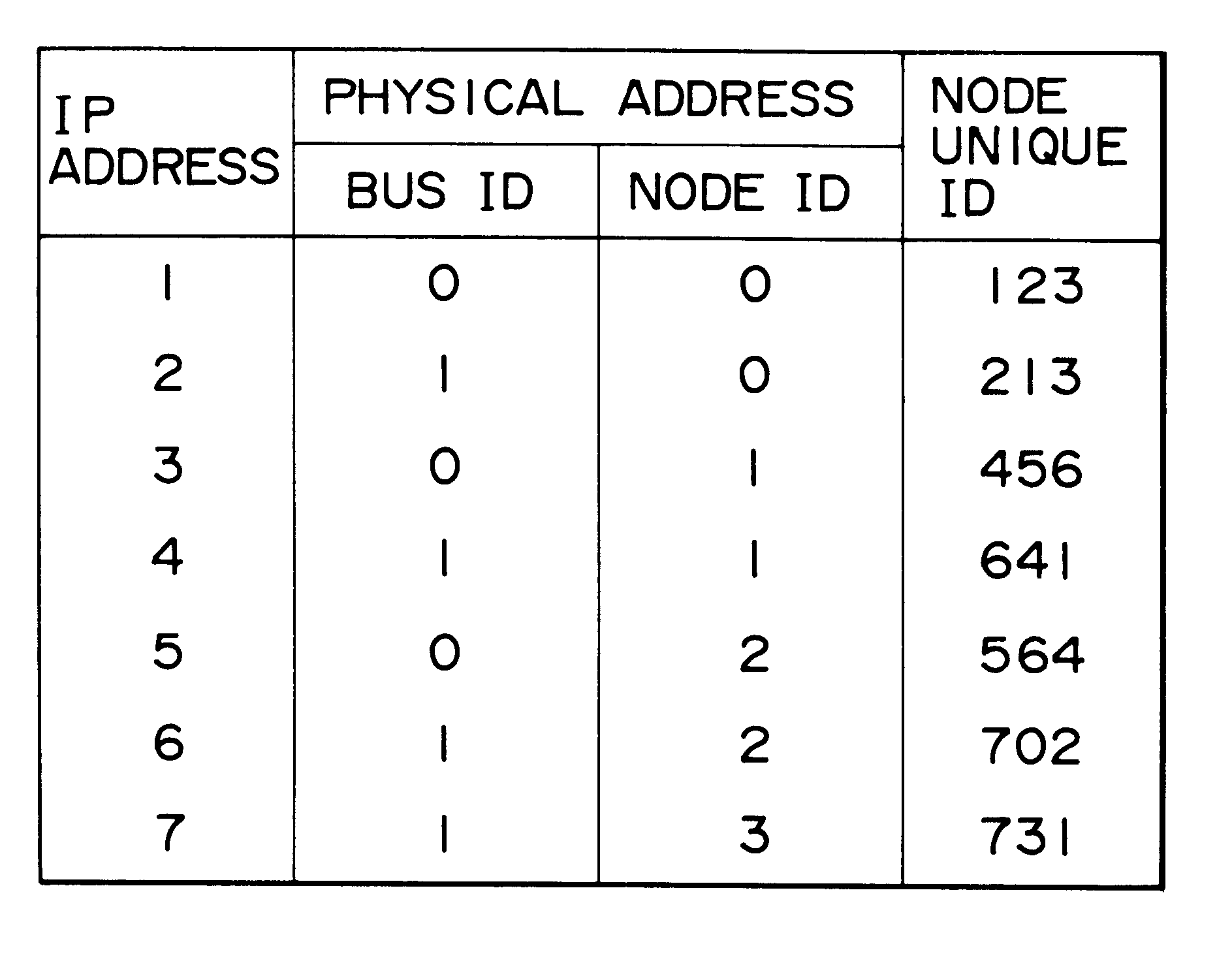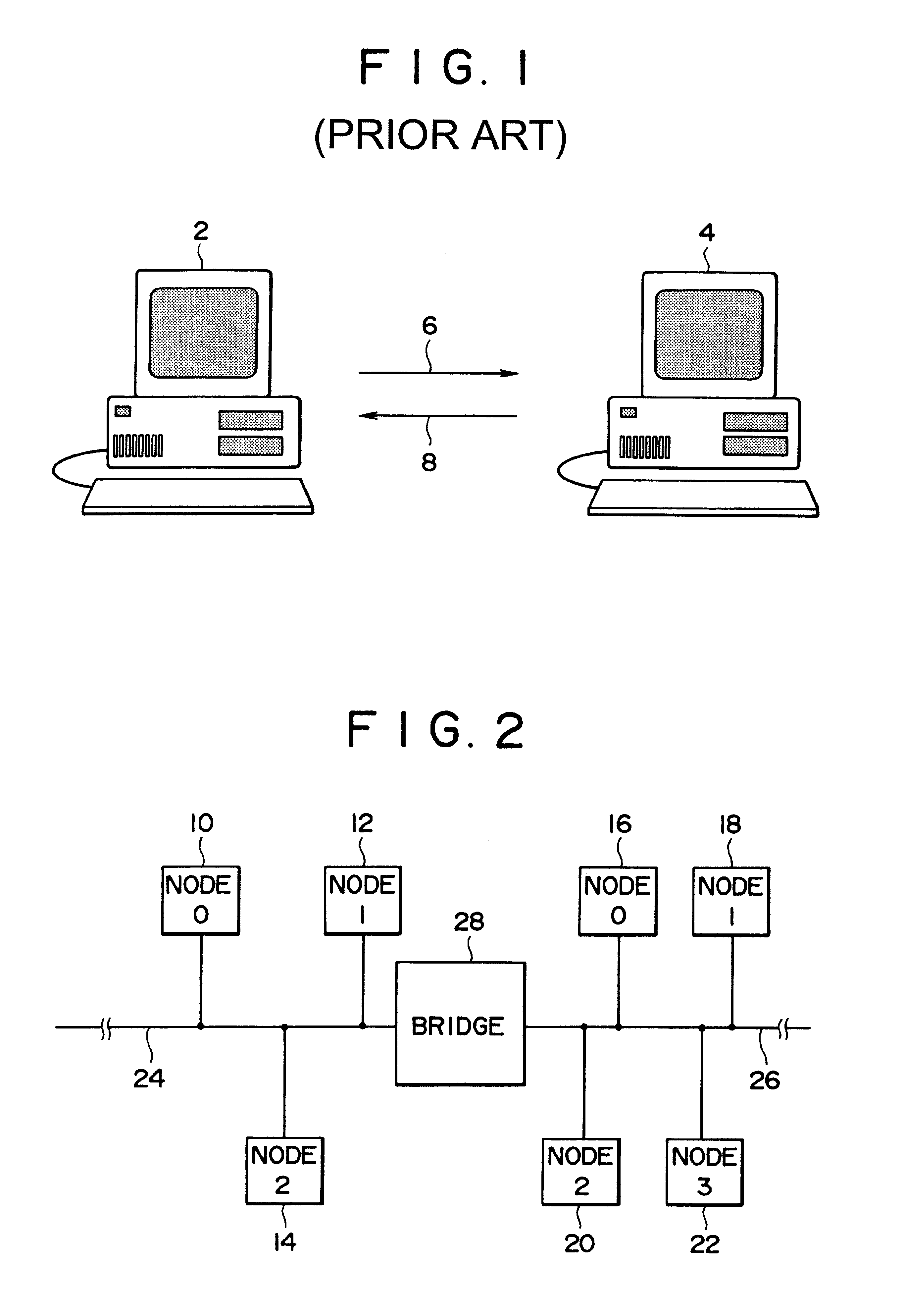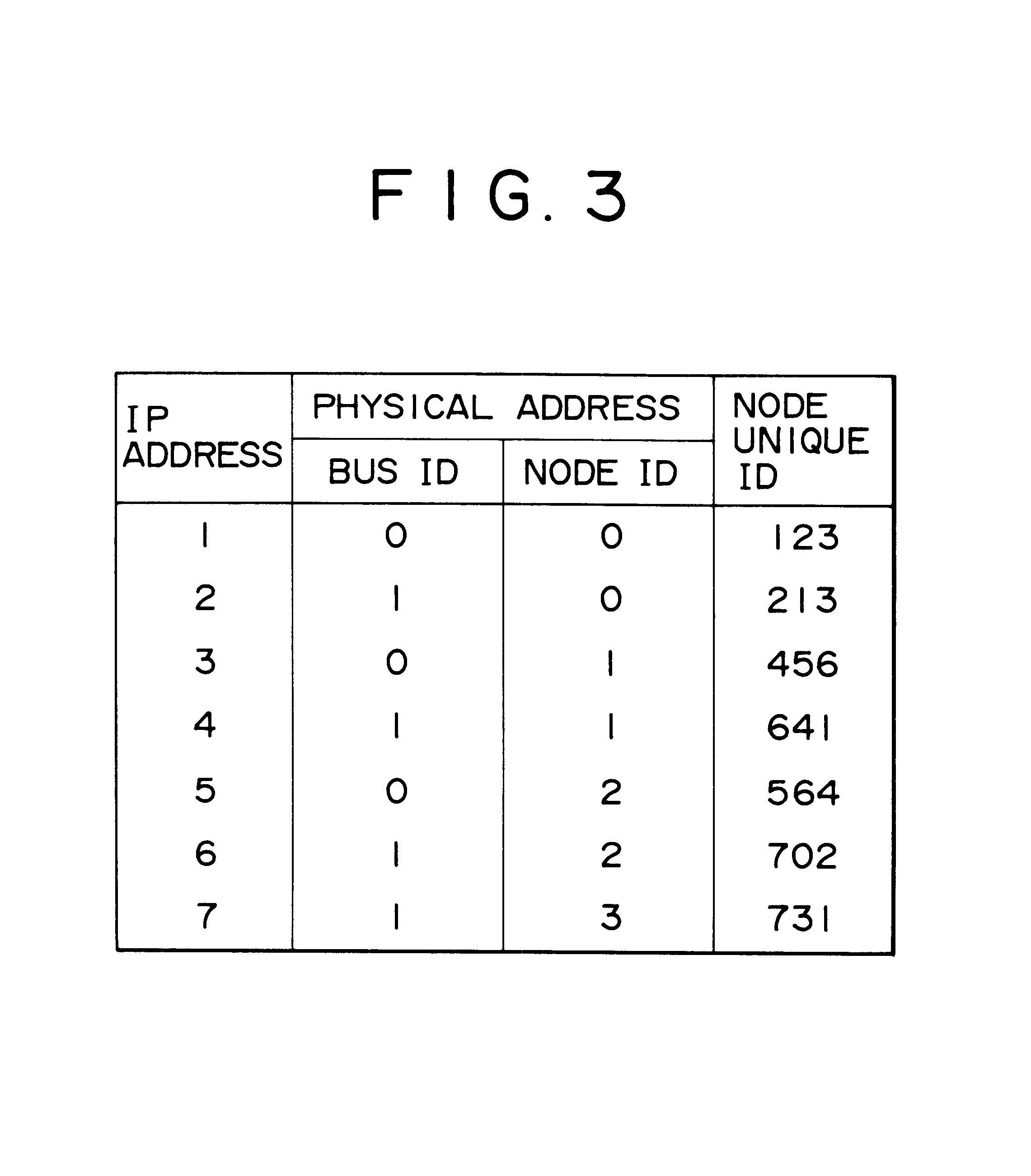Network communication system
a communication system and network technology, applied in the field of network communication system, can solve the problems of limiting their effectiveness, unable to acquire information, and the request node cannot acquire the address within the target computer of the application, and achieve the effect of facilitating arp-type communication
- Summary
- Abstract
- Description
- Claims
- Application Information
AI Technical Summary
Benefits of technology
Problems solved by technology
Method used
Image
Examples
Embodiment Construction
FIG. 2 shows an electronic network in which the present invention may be employed. As can be seen from the figure, the network includes two buses, bus 24 and bus 26, that are coupled together via a bridge 28. Bus 24 is coupled to three nodes, nodes 10, 12 and 14, and bus 26 is coupled to four nodes, nodes 16, 18, 20 and 22. For purposes of illustration, each node of FIG. 2 is considered to be a general purpose computer, buses 24 and 26 are considered to be IEEE-1394 buses, and the bridge is considered to be an IEEE-1394 bridge--although in view of this disclosure it will be apparent that many types of nodes, buses, and bridges are suitable for implementing the invention.
In any event, the buses and nodes of FIG. 2 are assigned identification numbers (IDs). Buses 24 and 26 are referred to as buses "0" and "1", respectively. Nodes 10, 12 and 14 are referred to as nodes "0", "1" and "2", respectively, and nodes 16, 18, 20 and 22 are referred to as nodes "0", "1", "2" and "3", respective...
PUM
 Login to View More
Login to View More Abstract
Description
Claims
Application Information
 Login to View More
Login to View More - R&D
- Intellectual Property
- Life Sciences
- Materials
- Tech Scout
- Unparalleled Data Quality
- Higher Quality Content
- 60% Fewer Hallucinations
Browse by: Latest US Patents, China's latest patents, Technical Efficacy Thesaurus, Application Domain, Technology Topic, Popular Technical Reports.
© 2025 PatSnap. All rights reserved.Legal|Privacy policy|Modern Slavery Act Transparency Statement|Sitemap|About US| Contact US: help@patsnap.com



